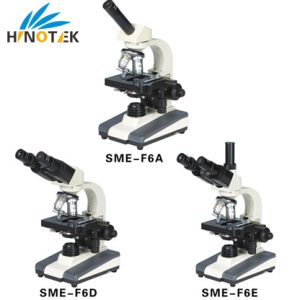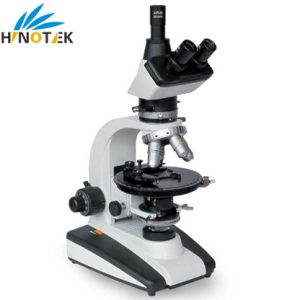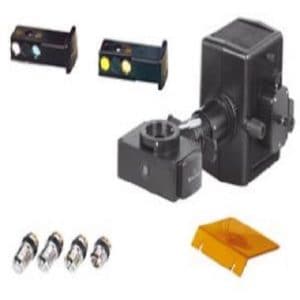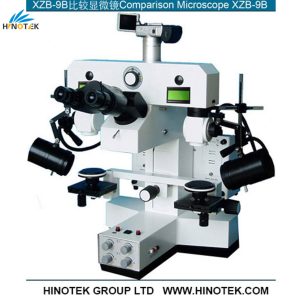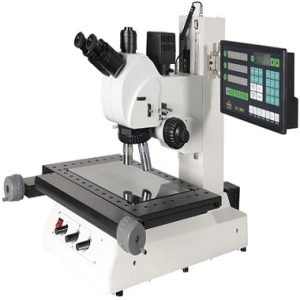This guide is designed to simplify the process for laboratory instrument distributors, importers, and end-users. We’ll walk you through the essential steps and considerations to ensure you select a microscope system that meets your technical requirements and budget.
The single most important factor in choosing a microscope is understanding what you need to view and what you need to do with the image. Ask yourself:
• What type of specimens will you examine? (e.g., biological cells, tissues, bacteria, insects, electronic components, metal surfaces, powders, liquids).
• What level of detail is required? (e.g., overall structure, cellular components, surface defects)
• Are the samples transparent or opaque?
• Are the samples live or fixed?
• Do you need a 3D view or a flat image?
• What magnification range is necessary? (Remember, higher isn’t always better!)
• Will you need to manipulate the sample under the microscope? (e.g., dissection, micro-injection, repairs)
• Is digital imaging or video recording required?
Answering these questions will point you toward the basic type of microscope you need.
• What type of specimens will you examine? (e.g., biological cells, tissues, bacteria, insects, electronic components, metal surfaces, powders, liquids).
• What level of detail is required? (e.g., overall structure, cellular components, surface defects)
• Are the samples transparent or opaque?
• Are the samples live or fixed?
• Do you need a 3D view or a flat image?
• What magnification range is necessary? (Remember, higher isn’t always better!)
• Will you need to manipulate the sample under the microscope? (e.g., dissection, micro-injection, repairs)
• Is digital imaging or video recording required?
Answering these questions will point you toward the basic type of microscope you need.
A. Optical Quality and Magnification
• Resolution and Clarity: The ability to discern fine details is crucial. Look for microscopes offering high numerical apertures and resolutions that allow for detailed observations under various lighting conditions.
• Magnification Range: Ensure that the microscope offers a range of magnifications appropriate for the types of specimens you’ll be examining. For biological applications, a combination of low, medium, and high-power objectives is beneficial.
B. Illumination Systems
• Lighting Options: High-quality microscopes often come with adjustable LED or halogen illumination systems. For fluorescence microscopes, examine if the light source is optimized for the excitation wavelengths required by your samples.
• Uniformity and Control: Check for features that allow you to control brightness and contrast effectively, as this will impact the clarity of the images produced.
C. Ergonomics and Usability
• User-Friendly Design: Consider a microscope that offers easy adjustments, digital interfacing, and ergonomic design for extended use. Tools such as camera attachments can be especially valuable for documentation and further analysis.
• Maintenance and Warranty: Choose a microscope that comes with reliable after-sales support and warranties. This is particularly important for instruments sourced from manufacturers committed to quality control and robust design.
D. Technology Integration
• Digital Integration: Modern laboratories benefit from digital imaging and software integration that facilitate image capture, analysis, and even remote monitoring. This is especially relevant for fluorescence and inverted microscopes.
• Automation and Upgradability: Some models offer automation for routine tasks and the ability to upgrade with new modules or software upgrades, ensuring that your microscope remains current with evolving research needs.
These features are central to ensuring that the microscope not only meets your specific application requirements but also provides a solid return on investment in terms of productivity and research quality.
• Resolution and Clarity: The ability to discern fine details is crucial. Look for microscopes offering high numerical apertures and resolutions that allow for detailed observations under various lighting conditions.
• Magnification Range: Ensure that the microscope offers a range of magnifications appropriate for the types of specimens you’ll be examining. For biological applications, a combination of low, medium, and high-power objectives is beneficial.
B. Illumination Systems
• Lighting Options: High-quality microscopes often come with adjustable LED or halogen illumination systems. For fluorescence microscopes, examine if the light source is optimized for the excitation wavelengths required by your samples.
• Uniformity and Control: Check for features that allow you to control brightness and contrast effectively, as this will impact the clarity of the images produced.
C. Ergonomics and Usability
• User-Friendly Design: Consider a microscope that offers easy adjustments, digital interfacing, and ergonomic design for extended use. Tools such as camera attachments can be especially valuable for documentation and further analysis.
• Maintenance and Warranty: Choose a microscope that comes with reliable after-sales support and warranties. This is particularly important for instruments sourced from manufacturers committed to quality control and robust design.
D. Technology Integration
• Digital Integration: Modern laboratories benefit from digital imaging and software integration that facilitate image capture, analysis, and even remote monitoring. This is especially relevant for fluorescence and inverted microscopes.
• Automation and Upgradability: Some models offer automation for routine tasks and the ability to upgrade with new modules or software upgrades, ensuring that your microscope remains current with evolving research needs.
These features are central to ensuring that the microscope not only meets your specific application requirements but also provides a solid return on investment in terms of productivity and research quality.
Given the range of applications, here’s an overview of common microscope types and their respective benefits:
Biological Microscope
Ideal for clinical, academic, and research environments, biological microscopes offer high-quality optics, precise adjustments, and are specifically engineered for examining live and stained specimens.
Stereo Microscope
Perfect for tasks requiring low magnification and high depth perception, stereo microscopes are widely used in fields such as materials science, quality control, and education. Their design allows users to view samples in three dimensions.
Fluorescence Microscope
These microscopes are designed to take advantage of fluorochromes. They are critical in biological research for highlighting specific molecules or structures within a cell, making them indispensable tools in modern laboratories.
Polarization Microscope
Used primarily for geological and material studies, polarization microscopes can reveal details about crystalline structures and stress patterns that are invisible under conventional light.
Inverted Microscope
With the objective lenses positioned below the specimen stage, inverted microscopes are particularly useful for cell culture studies where the specimen is observed through a container’s bottom.
Metallurgical Microscope
Engineered for the inspection and analysis of metals and alloys, metallurgical microscopes provide the rugged build and precision needed in industrial settings, ensuring detailed analysis under varying lighting conditions.
Microscope with Integrated Camera
Today’s market also offers microscopes with integrated digital cameras that allow instant image capture and sharing, which is essential for remote consultations and educational purposes.
Understanding the various microscope types enables you to align your specific laboratory applications with the instrument’s capabilities, thereby ensuring precision and optimal performance in your experiments.
Biological Microscope
Ideal for clinical, academic, and research environments, biological microscopes offer high-quality optics, precise adjustments, and are specifically engineered for examining live and stained specimens.
Stereo Microscope
Perfect for tasks requiring low magnification and high depth perception, stereo microscopes are widely used in fields such as materials science, quality control, and education. Their design allows users to view samples in three dimensions.
Fluorescence Microscope
These microscopes are designed to take advantage of fluorochromes. They are critical in biological research for highlighting specific molecules or structures within a cell, making them indispensable tools in modern laboratories.
Polarization Microscope
Used primarily for geological and material studies, polarization microscopes can reveal details about crystalline structures and stress patterns that are invisible under conventional light.
Inverted Microscope
With the objective lenses positioned below the specimen stage, inverted microscopes are particularly useful for cell culture studies where the specimen is observed through a container’s bottom.
Metallurgical Microscope
Engineered for the inspection and analysis of metals and alloys, metallurgical microscopes provide the rugged build and precision needed in industrial settings, ensuring detailed analysis under varying lighting conditions.
Microscope with Integrated Camera
Today’s market also offers microscopes with integrated digital cameras that allow instant image capture and sharing, which is essential for remote consultations and educational purposes.
Understanding the various microscope types enables you to align your specific laboratory applications with the instrument’s capabilities, thereby ensuring precision and optimal performance in your experiments.
1. Assess Long-Term Needs: Consider future research directions or potential upgrades in your lab so that your chosen microscope remains relevant over time.
2. Request Demos or Trials: When possible, request demonstrations or trial periods to evaluate the microscope’s performance in real-world conditions.
3. Compare Specifications: Compare technical specifications such as resolution, magnification, and illumination capabilities across different models and manufacturers.
4. Leverage Expert Reviews: Read up on user experiences and expert reviews, and consider insights from established buying guides to understand the performance nuances of each microscope type.
5. Source from Trusted Manufacturers: For businesses involved in export, it is important to collaborate with suppliers who can consistently provide high-quality, certified products. Our company sources premium laboratory instruments directly from Chinese factories, ensuring competitive pricing and internationally recognized quality.
2. Request Demos or Trials: When possible, request demonstrations or trial periods to evaluate the microscope’s performance in real-world conditions.
3. Compare Specifications: Compare technical specifications such as resolution, magnification, and illumination capabilities across different models and manufacturers.
4. Leverage Expert Reviews: Read up on user experiences and expert reviews, and consider insights from established buying guides to understand the performance nuances of each microscope type.
5. Source from Trusted Manufacturers: For businesses involved in export, it is important to collaborate with suppliers who can consistently provide high-quality, certified products. Our company sources premium laboratory instruments directly from Chinese factories, ensuring competitive pricing and internationally recognized quality.
Selecting the right microscope is a multifaceted process that involves understanding your specific application needs, evaluating key optical and technological features, and exploring different microscope types available in the market. Whether your focus is on biological imaging, material science, or industrial quality control, making an informed decision will enhance your laboratory’s capabilities and promote more efficient research outcomes.
By following the structured approach outlined in this guide, laboratory professionals, distributors, and importers can confidently choose the microscope that best fits their scientific and business objectives. Our expertise, backed by comprehensive guides and direct access to quality manufactured products from China, ensures that you are equipped with the tools necessary for precision and innovation.
For further details and customized assistance, feel free to reach out to our market research experts who continuously update our keyword and product information to meet the evolving demands of the global market.
By following the structured approach outlined in this guide, laboratory professionals, distributors, and importers can confidently choose the microscope that best fits their scientific and business objectives. Our expertise, backed by comprehensive guides and direct access to quality manufactured products from China, ensures that you are equipped with the tools necessary for precision and innovation.
For further details and customized assistance, feel free to reach out to our market research experts who continuously update our keyword and product information to meet the evolving demands of the global market.


